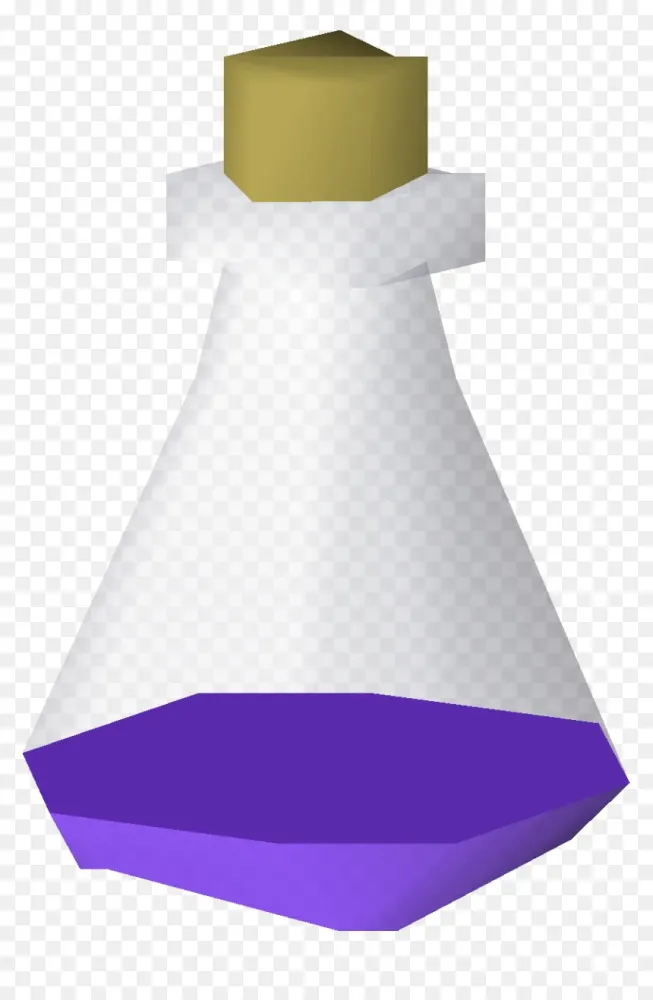Your cart is empty
OSRS Antipoison vs Antidote A Comprehensive Guide for Players

In Old School RuneScape (OSRS), poison and venom can turn a thrilling adventure into a health-draining nightmare. Whether you’re battling venomous spiders in Taverley Dungeon or facing bosses like Zulrah, knowing how to counter these status effects is crucial. Two primary tools exist for this: antipoison and antidote potions. But which one should you choose? This guide dives deep into the differences, uses, and strategic applications of antipoison vs antidote in OSRS, helping you make informed decisions to enhance your gameplay.
Before comparing antipoison and antidote potions, it’s essential to grasp how poison and venom work in the game. These status effects can sap your hitpoints over time, making them dangerous in prolonged encounters.
How Poison Works
Poison is inflicted by various sources, such as monsters (e.g., Cave Crawlers), weapons laced with poison (e.g., Dragon Dagger), or environmental hazards. Once poisoned, your character takes periodic damage, starting at a set amount (e.g., 6 damage every 18 seconds) until cured or the effect expires.
Venom: A Deadlier Threat
Venom, introduced with bosses like Zulrah, is a more severe version of poison. It starts with low damage but escalates over time, potentially hitting up to 20 damage per tick if untreated. Curing venom often requires specific potions, making it a priority in certain encounters.
Why Potions Matter
Both poison and venom can disrupt your strategy, forcing you to retreat or waste resources. Antipoison and antidote potions are your primary defenses, but their differences in duration, cost, and effectiveness can significantly impact your inventory and budget.
Antipoison Potions Explained
Antipoison potions are the most accessible option for combating poison in OSRS. They come in several variants, each offering different levels of protection.
Standard Antipoison
The basic antipoison potion is crafted at level 5 Herblore by mixing unicorn horn dust with a marrentill potion (unf). It cures poison and grants 90 seconds of immunity. Key features include:
- Low Herblore requirement: Easy to make early in the game.
- Short immunity: Suitable for quick encounters.
- Venom curing: Two doses reduce venom to poison, then cure it.
Super Antipoison
Requiring level 48 Herblore, super antipoison is made with irit leaf and unicorn horn dust. It provides 6 minutes of poison immunity, making it a step up from the standard version. Notable aspects:
- Moderate duration: Ideal for mid-level content like Dagannoth Kings.
- Accessibility: Found in places like the Observatory Dungeon (1-dose respawn).
- Cost: More expensive than standard antipoison but widely available.
Antipoison (+)
Exclusive to the Chambers of Xeric, antipoison (+) is crafted at level 90 Herblore using noxifer and cicely. It mimics the antidote+ (see below) with 9 minutes of immunity but cannot leave the raid. Unique trait:
- Raid-specific: Only relevant for Chambers of Xeric players.
Antidote Potions Breakdown
Antidote potions, specifically antidote+ and antidote++, are more advanced options that offer longer immunity and venom-curing capabilities. They require higher Herblore levels and rarer ingredients.
Antidote+
Crafted at level 68 Herblore by mixing toadflax and yew root in coconut milk, antidote+ grants 9 minutes of poison immunity. Highlights include:
- Extended duration: 50% longer than super antipoison.
- Venom curing: Two doses can cure venom, similar to antipoison.
- Four doses: Unlike most potions, it yields four doses per craft.
Antidote++
The strongest option, antidote++ is made at level 79 Herblore with irit, coconut milk, and a magic root. It provides 12 minutes of poison immunity and 18–36 seconds of venom immunity. Key advantages:
- Longest immunity: Only surpassed by anti-venom+ (15 minutes).
- Venom efficiency: Two doses cure venom fully, reducing it to poison first.
- Cost-effectiveness: Often cheaper than super antipoison due to boss drops (e.g., Zulrah, Kraken).
Comparing Antipoison and Antidote Key Differences
To help you choose the right potion, let’s break down the critical differences in a structured comparison.
| Potion | Herblore Level | Immunity Duration | Venom Curing | Approx. Cost (GE) | Best Use Case |
|---|---|---|---|---|---|
| Antipoison | 5 | 90 seconds | Two doses | 100–400 gp (4-dose) | Early-game, short fights |
| Super Antipoison | 48 | 6 minutes | Two doses | 1,000–3,000 gp (4-dose) | Mid-level bossing |
| Antipoison (+) | 90 | 9 minutes | Two doses | Not sold (raid-only) | Chambers of Xeric |
| Antidote+ | 68 | 9 minutes | Two doses | 1,500–2,000 gp (4-dose) | Prolonged mid-tier fights |
| Antidote++ | 79 | 12 minutes | Two doses | 1,000–2,000 gp (4-dose) | High-level bossing, venom fights |
Cost vs. Effectiveness
Antidote++ often stands out as the most cost-effective option. Despite its superior duration and venom-curing ability, it’s frequently cheaper than super antipoison due to high supply from boss drops like Zulrah. For example, a 4-dose antidote++ might cost 1,500 gp, while a super antipoison could hit 3,000 gp. Tip: Check the Grand Exchange regularly, as prices fluctuate.
Accessibility for Ironmen
For ironmen, crafting antipoison is easier early on due to low Herblore requirements and common ingredients (marrentill, unicorn horn). Antidote++ requires rare magic roots and higher levels, making it a late-game goal. However, Zulrah drops can provide a steady supply for those tackling bosses.
Venom-Specific Scenarios
Both potions cure venom with two doses, but antidote++’s 12-minute immunity makes it preferable for venom-heavy fights like Zulrah or Vorkath. Its brief venom immunity (18–36 seconds) also reduces the risk of reapplication during chaotic encounters.
Strategic Applications and Recommendations
Choosing between antipoison and antidote depends on your activity, budget, and game progression. Here’s how to apply them effectively.
Early-Game Players
For low-level players tackling quests like Watchtower or training Slayer, standard antipoison is sufficient. Its low cost and accessibility make it ideal for short poison exposures. Recommendation: Carry a 4-dose antipoison for quests or low-tier Slayer tasks.
Mid-Level Content
Super antipoison shines in mid-level bossing, such as Dagannoth Kings or Barrows. Its 6-minute immunity covers most encounters without breaking the bank. However, if you’re Herblore-trained, antidote+ offers better value for prolonged fights. Recommendation: Use super antipoison for general use, but switch to antidote+ for efficiency.
Endgame and Bossing
For high-level content like Zulrah, Vorkath, or Chambers of Xeric, antidote++ is the gold standard. Its 12-minute immunity minimizes inventory management, and its low cost makes it a no-brainer. Recommendation: Always bring antidote++ for venomous bosses or raids, especially if venom is a threat.
Situational Tips
- Inventory management: Decant antidote++ into 1-dose vials for raids to save space.
- Pre-potting: Drink antidote++ before entering venom-heavy areas (e.g., Theatre of Blood) to maximize uptime.
- Backup options: Carry a Sanfew serum for combined poison, stat restoration, and curing effects in niche scenarios.
In the battle of antipoison vs antidote in OSRS, there’s no one-size-fits-all answer. Antipoison potions are great for early-game accessibility and short encounters, while antidote+ and antidote++ dominate in prolonged or venom-heavy fights due to their extended immunity. For most players, antidote++ is the best choice, offering unmatched duration and cost-effectiveness, especially in endgame content. Always consider your activity, budget, and Herblore level when stocking up. With the right potion in your inventory, you’ll conquer even the most venomous foes in Gielinor with confidence.
